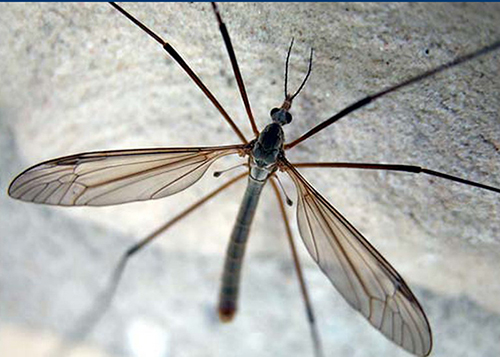Integrated Pest Management
Crane Fly
Tipula oleracea
Pest Description
- adults: ~ 1 inch long; grayish brown to tan; very long legs; resemble large mosquitoes
- larvae: 1 – 1 1/2 inches long; cylindrical, tapering toward the head; gray brown in color; legless with a hidden head and finger-like projections on the rear end; have a tough, leathery look to their “skin”
Host Plants, Diet & Damage
- larvae feed on turfgrasses
- larval feeding appears as brown spots
- adult and larval emergence holes may be visible
- secondary damage can occur from birds and rodents digging up turf in search of larvae
Biology, Life Cycle & Damaging Life Stage
- overwinter as larvae in the soil
- adults emerge from soil in early spring and late summer
- deposit eggs in turf over a 3 to 4-day period
- larvae primarily feed on turf roots and crowns during the spring and fall months
- on damp, warm nights, larvae feed on turf above ground
- two generations per year
- larvae are the damaging stage
IPM Recommendations
- Monitor using a soapy-water flush and soil core sampling.
- Properly irrigate and fertilize.
- Provide adequate drainage and aeration to areas that are prone to standing water or heavy water saturation; chronically wet areas are predisposed to crane fly infestations.
- Apply a biopesticide containing entomopathogenic nematodes or Beauveria fungal spores to provide suppression.
- Apply an insecticide (pyrethroid) to provide suppression.



